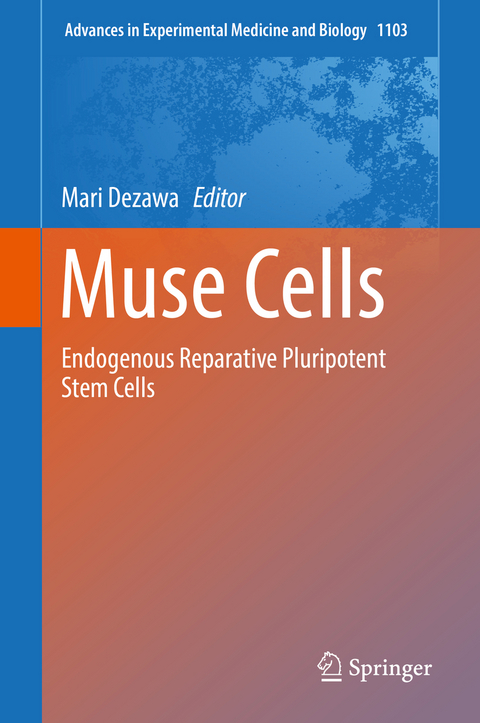
Muse Cells
Springer Verlag, Japan
978-4-431-56845-2 (ISBN)
Mari Dezawa, M.D., Ph.D., is professor and chairperson at the Department of Stem Cell Biology and Histology, Tohoku University Graduate School of Medicine (Japan). She has contributed to regenerative medicine by discovering non-tumorigenic reparative pluripotent stem cells, multilineage-differentiating stress-enduring (Muse) cells that naturally reside in the living body. Dr. Dezawa graduated from Chiba University School of Medicine in 1989 and gained her Ph.D. from the same university in 1995. In 2000 she joined Yokohama City University, where she started mesenchymal stem cell (MSC) research. After moving to Kyoto University Graduate School of Medicine as associate professor in 2003, she discovered methods to induce neurons and skeletal muscle cells from human MSCs by combining gene introduction and cytokine stimulation. In 2008, she became professor and chair of the Department of Stem Cell Biology and Histology at Tohoku University Graduate School of Medicine. She subsequently has published a number of articles in leading journals on Muse cells and their reparative functions in animal disease models. Dr. Dezawa is the author of more than 120 original articles in international journals and serves as an editorial board member of several international journals. She is a fellow of the National Academy of Inventors, USA.
Foreword.- Preface.- Chapter 1 The Muse cell discovery; thanks to wine and science.- Chapter 2 Basic characteristics of Muse cells.- Chapter 3 Muse cells are endogenous reparative stem cells.- Chapter 4 Protocols for isolation and evaluation of Muse cells.- Chapter 5 Stem cells and DNA repair capacity: Muse stem cells are among the best performers.- Chapter 6 Immunomodulatory properties and potential therapeutic benefits of Muse cells administration in diabetes.- Chapter 7 The Role of the Mitochondria in the Evolution of Stem Cells, Including MUSE Stem Cells, and Their Biology.- Chapter 8 Acute myocardial infarction, cardioprotection, and Muse cells.- Chapter 9 Application of Muse Cell Therapy to Stroke.- Chapter 10 Muse Cell – A New Paradigm for Cell Therapy and Regenerative Homeostasis in Ischemic Stroke.- Chapter 11 Application of Muse cell therapy for kidney diseases.- Chapter 12 Liver regeneration supported by Muse cells.- Chapter 13 Current cell based therapies in the chronicliver diseases.- Chapter 14 Artificial pigmented-human skin created by Muse cells.- Chapter 15 Muse Cells and Aortic Aneurysm.- Chapter 16 Muse cells and ischemia-reperfusion lung injury.- Chapter 17 Clinical trials of Muse cells.- Chapter 18 Future of Muse Cells.
| Erscheinungsdatum | 20.12.2018 |
|---|---|
| Reihe/Serie | Advances in Experimental Medicine and Biology ; 1103 |
| Zusatzinfo | 89 Illustrations, color; 43 Illustrations, black and white; XII, 315 p. 132 illus., 89 illus. in color. |
| Verlagsort | Tokyo |
| Sprache | englisch |
| Maße | 155 x 235 mm |
| Themenwelt | Medizin / Pharmazie ► Physiotherapie / Ergotherapie ► Orthopädie |
| Studium ► 1. Studienabschnitt (Vorklinik) ► Physiologie | |
| Naturwissenschaften ► Biologie ► Genetik / Molekularbiologie | |
| Naturwissenschaften ► Biologie ► Zellbiologie | |
| Technik ► Medizintechnik | |
| Schlagworte | Mesenchymal Stem Cells • Non-tumorigenicity • Pluripotent Stem Cells • Regenerative medicine • Tissue engineering • Tissue homeostasis |
| ISBN-10 | 4-431-56845-X / 443156845X |
| ISBN-13 | 978-4-431-56845-2 / 9784431568452 |
| Zustand | Neuware |
| Haben Sie eine Frage zum Produkt? |
aus dem Bereich


